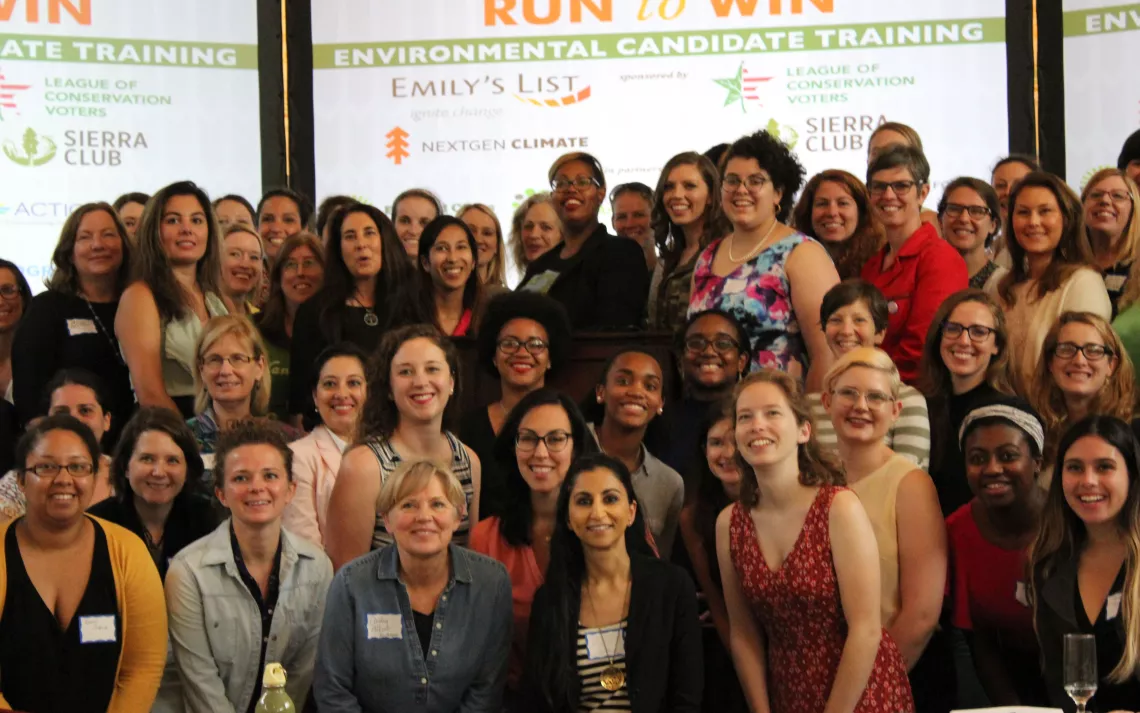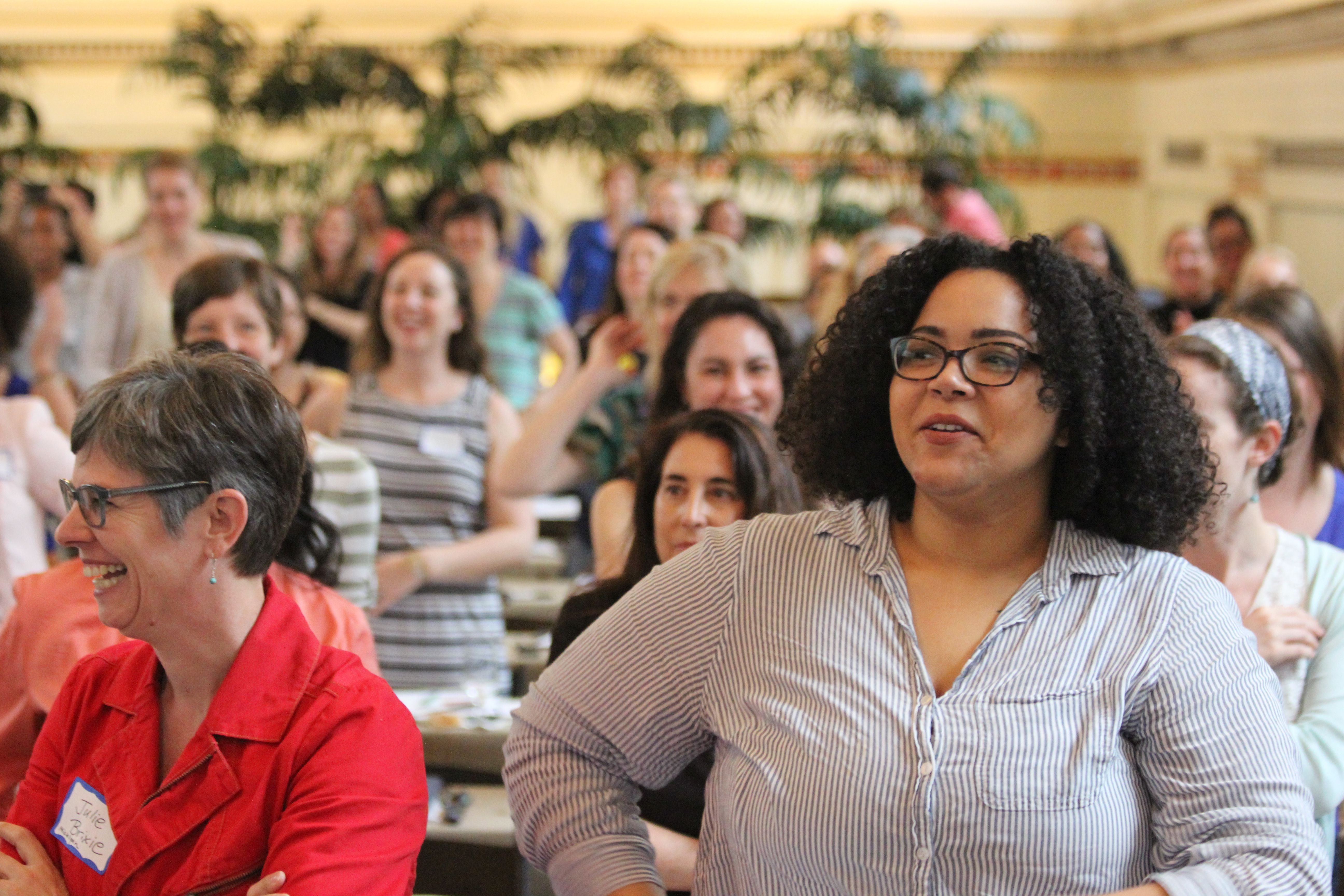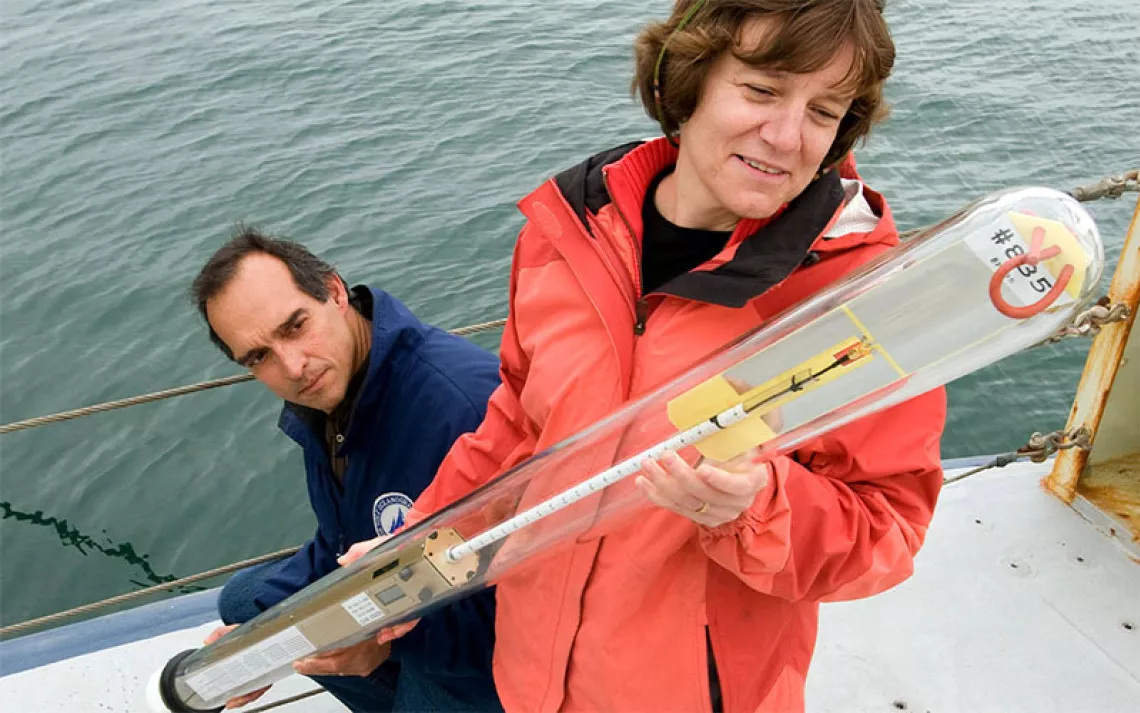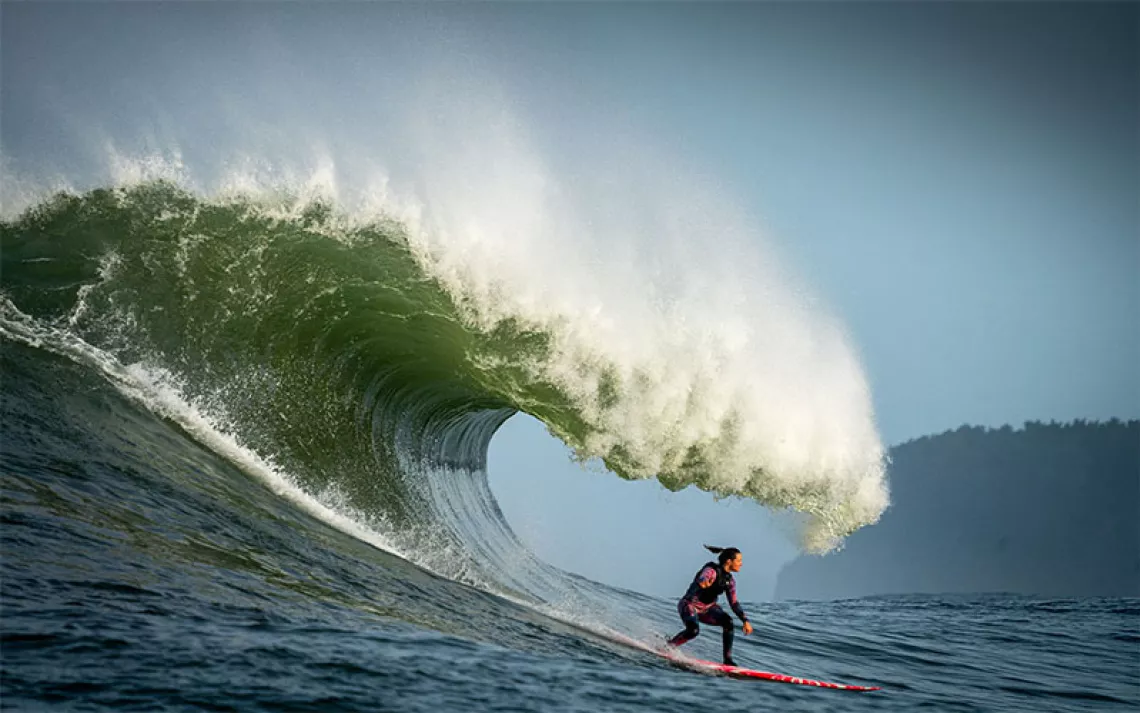Want Better Environmental Policies? Ask a Woman to Run for Office
Emily’s List and environmental organizations see more women running as a win-win

Run to Win 101—Environmental Candidate Training in Washington, D.C., on April 30. | Photos by Julie Ann Pixler
In 2014, Brionté McCorkle, an organizer with the Sierra Club’s Georgia Chapter, was working to expand transit in Clayton County. The county commission had shut down the local transit service in 2010, citing a lack of funds, but an easy solution was at hand: Clayton County could join the Metropolitan Atlanta Rapid Transit Authority (MARTA). For that to happen, the Clayton County Commission simply had to put the option on the ballot, along with a 1 percent sales tax to fund it.
But the county commissioners dragged their heels until finally, on the July 4 weekend, they met to decide the issue. Given the holiday, McCorkle and other activists feared low turnout from the community, which would make it seem like voters didn’t really care about getting public transit back. But the courtroom was packed. Three out of five commissioners voted to put MARTA on the ballot. The courthouse erupted in cheers.
That’s when McCorkle knew she would run for elected office. “To me it was such a cut-and-dry, ‘yes, let’s do this,’ but we had to fight so hard to get MARTA on the ballot,” McCorkle says. “As much as I like grassroots advocacy, I felt there was a role for me as an elected official to just do the right thing.”
She has declared her candidacy to represent district 11 on the Atlanta City Council, a seat which will be decided in the November election. The woman who holds that office now, Keisha Lance Bottoms, is running for mayor. McCorkle heard the news just after the 2016 election, and it was the final push factor for her new pursuit of public office. “I decided I would be crazy not to go for it,” she says.
The 2016 election—with its stunning defeat of the first female presidential candidate in U.S. history and Donald Trump’s victory after a racist and misogynistic campaign—has turned out to be a push factor for a lot of women. The day after the Women’s March in January, Emily’s List, a political action committee that helps women run for Democratic office, hosted a training in Washington, D.C., on the nuts and bolts of how to do it. Five hundred women showed up. Since then, the Trump administration’s attacks on issues from women’s rights to environmental protections continue to galvanize the progressive movement. According to Vanessa Cardenas, director of strategic communications for Emily’s List, in a regular year they are contacted by fewer than a thousand women interested in elected office. This year, so far, that number has been over 12,000.
On April 30, the day after the Peoples Climate March brought 200,000 people to march to the White House, McCorkle, along with about 100 other women, attended Run to Win 101—Environmental Candidate Training, an event hosted by Emily’s List in partnership with a group of environmental organizations that included the Sierra Club, the League of Conservation Voters, Green for All, and Emerald Cities. Craig Auster of the League of Conservation Voters had initiated the idea of an Emily’s List training following the march. “If we’re going to make progress on the environment at the state, local, and federal level,” he says, “the best thing we can do is have more people in elected office who are waking up every day thinking about what they can do to solve the climate crisis.”
According to a recent report issued by Rachel’s Network, which has been tracking men's and women’s voting records in Congress since 2003, congresswomen are more likely than their male colleagues to vote in favor of environmental policies. Between 2006 and 2015, women in the Senate voted for the environment 70.6 percent of the time, compared with 48 for their male counterparts. The average score of women in the House of Representatives over the 10-year period was 69 compared to 44.6 among men.
The collaboration between Emily’s List and environmental groups reflects a growing recognition of the ways in which women’s rights and environmental issues overlap. “This is about building a movement,” Cardenas says. “Having a choice about whether or not to start a family is a fundamental right for women, but so is the right to be healthy, for your kids to be healthy. If women are living in polluted cities, or they are dealing with climate change, or they work in low-wage jobs that expose them to extreme weather, they are being deprived of those rights.”

A. Tianna Scozzaro, director of the Sierra Club’s Gender, Equity, and Environment program, was one of several speakers at the environmental candidate training. Scozzaro attended an Emily’s List training a decade ago and had spent several years pounding the pavement with the League of Conservation Voters to support other environmental candidates before finally running for (and being elected to) D.C.’s Advisory Neighborhood Commission last November. “I knew that women usually have to be asked three times before they will run for office,” says Scozzaro. That turned out to be true for her as well.
How does she like elected office so far? “I’ve never been so glad to be in a role where my voice can be heard directly,” Scozzaro says. “I understand the need for a grassroots outside game, but it’s so important to have people on the inside who are champions for the environment.”
Another woman at the training, Sarah Elfreth, 28, of Annapolis, Maryland, wants to run for office partly because she lives in a downtown district that is not represented by a single woman at the local city, county, state, or federal level. “I have a lot of faith in our representatives,” says Elfreth. “But I know from my experience as a nonprofit lobbyist that women just bring a totally different perspective to the table in terms of being consensus builders and really thinking about experiences outside of their own.”
Elfreth plans to run for a seat in the state senate. “A lot of people are awake right now,” she says, “not wanting to sit on our hands and wanting to move forward.”
Will all of this forward momentum translate into electoral gains? Emily’s List and the environmental groups that hosted the environmental candidate training plan to keep working together to ensure that it will. “This was the first time we have ever done something like this involving pro-choice, pro-environment women,” Scozzaro says. “All the organizations that participated went away thinking, 'We need to do more of this.'”
The disconnect between policies in D.C. and the concerns of most Americans is fueling hope of a sea change, especially for the 2018 midterm elections. While the Trump administration is busy considering a withdrawal from the Paris agreement, dismantling the Clean Power Plan, and gutting the Environmental Protection Agency, a new survey from Quinnipiac University shows that 76 percent of voters are concerned about climate change, and 66 percent are worried that it will affect them or a family member. According to a 2016 poll from the Pew Research Center, 57 percent of women and 47 percent of men say that the environment is important to them in the next election.
McCorkle thinks that voters are starting to realize that the environment, much like transportation, is essential to their quality of life. “At the end of the day, nothing else really matters if we don’t have air that we can breathe, water that we can drink, and land that we can live on and be safe on,” she says. “We have to fix this. And while we’re fixing this, we can fix other things, too.”
 The Magazine of The Sierra Club
The Magazine of The Sierra Club



